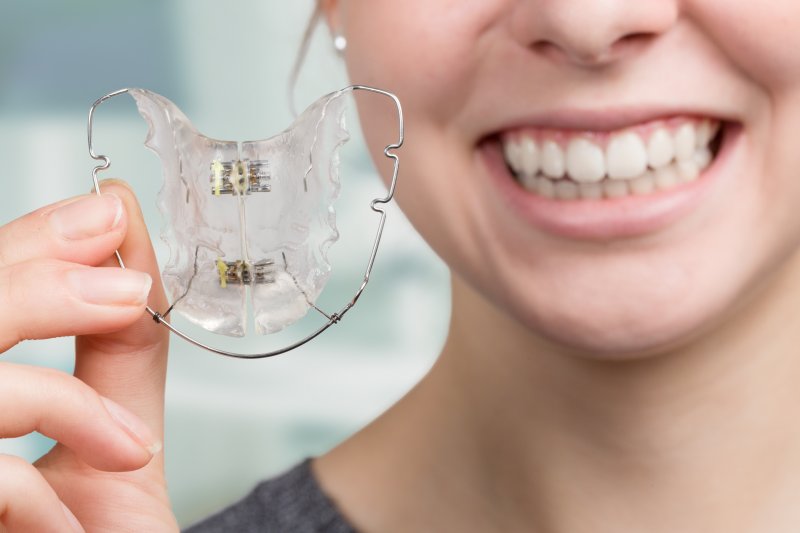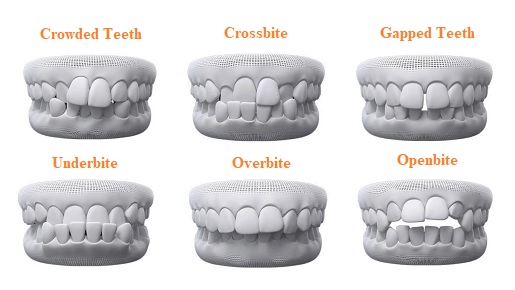Discover the Advantages of Invisalign for a Perfect Smile Change
Discover the Advantages of Invisalign for a Perfect Smile Change
Blog Article
Invisalign vs. Traditional Dental braces: Which Option Is Right for You?
When thinking about orthodontic treatment, the option in between Invisalign and conventional dental braces offers numerous important aspects that warrant careful examination. Invisalign supplies a discreet option with detachable aligners, while typical dental braces give an extra noticeable yet effective service for serious imbalance. Each option encompasses distinct benefits and disadvantages related to aesthetic appeals, comfort, therapy duration, and cost. Comprehending these nuances is vital for making an informed choice that lines up with your personal choices and way of life. The inquiry continues to be: which alternative will ideal fulfill your orthodontic needs and expectations?
Overview of Therapy Alternatives

In contrast, traditional dental braces include steel braces and wires that are adhered to the teeth. This method uses continual pressure over time to attain alignment. While effective for complicated orthodontic concerns, typical braces require regular visits for changes and can position obstacles in preserving dental hygiene as a result of the difficulty of cleaning up about brackets and cords.
Both alternatives have their qualities, and the option commonly depends upon certain dental problems, way of living preferences, and individual compliance. Inevitably, speaking with an orthodontic specialist is crucial for figuring out the most suitable therapy strategy customized to private requirements. Recognizing the subtleties of each option can substantially affect the overall success of orthodontic treatment.
Visual Factors To Consider
A considerable variable influencing the option between Invisalign and standard braces is the aesthetic appeal each therapy supplies. Invisalign aligners are crafted from clear plastic, making them essentially unseen when put on. This discreet appearance is specifically attracting young adults and adults that may feel uncomfortable concerning their orthodontic therapy. The capacity to maintain a natural smile throughout the alignment procedure can dramatically enhance the person's self-confidence in professional and social settings.
On the other hand, traditional braces include metal braces and cords, which can be more recognizable. While developments in orthodontic innovation have actually resulted in the growth of smaller sized brackets and tinted elastics, typical dental braces still keep an even more noticeable account. For some individuals, the visibility of dental braces may hinder them from looking for required treatment.
Eventually, the option between Invisalign and typical braces may depend upon personal choices pertaining to appearances. Patients that prioritize discretion typically lean towards Invisalign, while those that are less worried concerning presence may decide for conventional dental braces. Recognizing the aesthetic ramifications of each alternative is essential for making an educated choice that straightens with one's way of living and choices.
Convenience and Convenience

In terms of convenience, Invisalign aligners are detachable, making it possible for people to appreciate their favored foods without restriction and keep optimum dental health. Cleaning and flossing are simplified, as the aligners can be secured throughout these routines, whereas traditional braces need cautious navigating around cords and braces.
In comparison, conventional dental braces demand regular changes, making them much less convenient for those with busy routines. Overall, the comfort and comfort of Invisalign make it an appealing choice for several individuals seeking orthodontic therapy.
Treatment Period and Effectiveness
While both Invisalign and standard braces work in remedying dental imbalances, the duration of treatment can vary significantly between both alternatives. Typically, Invisalign treatment can take anywhere from 12 to 18 months, depending on the intricacy of the case. The clear aligners work by slowly shifting teeth into their desired placements, and routine follow-ups with an orthodontist assistance ensure progression continues to be on the right track.
On the other hand, standard braces often require a longer commitment, normally ranging from 18 months to three years. This is due to their fixed nature and using brackets and cables, which can be extra effective for intricate cases and serious imbalances (Invisalign). The therapy efficiency of typical braces is well-documented, as they permit specific modifications and higher control over tooth motion
Ultimately, the choice in between Invisalign and standard braces might rest on both the expected therapy duration and the particular oral issues at hand. Consulting with an orthodontist is critical, as they can give customized referrals based upon specific requirements, making certain the picked approach lines up with anonymous preferred outcomes and durations.
Price Comparison and Insurance Options
Expense plays a considerable function in the decision-making procedure for individuals taking into consideration orthodontic therapy, whether choosing Invisalign or standard dental braces. Usually, the cost of Invisalign arrays from $3,000 to $8,000, while standard braces commonly set you back in between $2,000 and $6,000. Elements affecting these prices include the intricacy of the situation, the period of treatment, and geographical area.
Insurance policy insurance coverage can significantly affect out-of-pocket expenditures. Several dental insurance policy plans provide partial protection for orthodontic therapies, but the specifics can vary extensively. It is crucial for individuals to evaluate their insurance plan to figure out the level of protection for either alternative. Usually, standard braces might be a lot more regularly covered by insurance policy plans compared to Invisalign, which some insurance firms categorize as an aesthetic procedure.
In addition, numerous orthodontic methods use versatile layaway plan, making both treatment alternatives more accessible. People need to inquire concerning potential financing options and discounts for in advance repayments. Evaluating the complete cost, including insurance coverage benefits description and layaway plan, is crucial for making an informed decision that aligns with both visual choices and budget plan considerations.

Verdict
In recap, the option between Invisalign and typical dental braces depends upon numerous variables, consisting of aesthetic choices, comfort, treatment duration, and expense. Invisalign uses a discreet, detachable option that facilitates oral hygiene and nutritional flexibility, while typical dental braces might be preferable for intricate dental concerns and usually come with a reduced price point. Eventually, assessment with an orthodontist is important to assess private scenarios and determine the most ideal therapy alternative for achieving optimal oral positioning.
When thinking about orthodontic therapy, the choice in between Invisalign and traditional braces presents a number of essential factors that warrant mindful analysis.Comparing Invisalign and typical braces discloses distinct therapy choices for orthodontic adjustment.While both Invisalign and conventional dental braces are effective in remedying oral misalignments, the duration of therapy can differ dramatically between the 2 choices.Cost plays a substantial duty in the decision-making procedure for people thinking about orthodontic therapy, whether deciding for Invisalign or typical dental braces.In summary, the choice in between Invisalign and a knockout post typical dental braces hinges on several aspects, including visual choices, convenience, therapy period, and cost.
Report this page